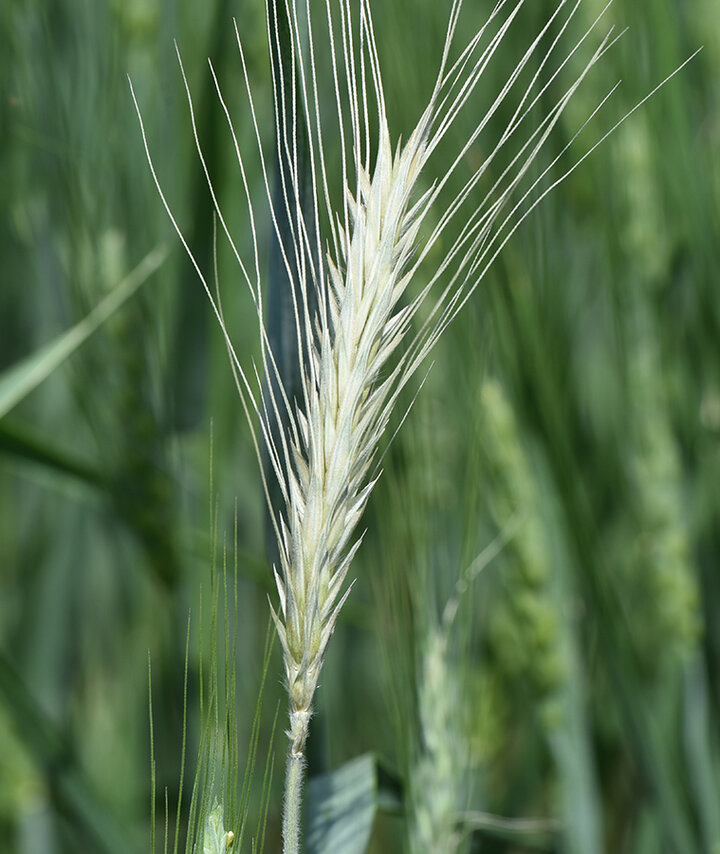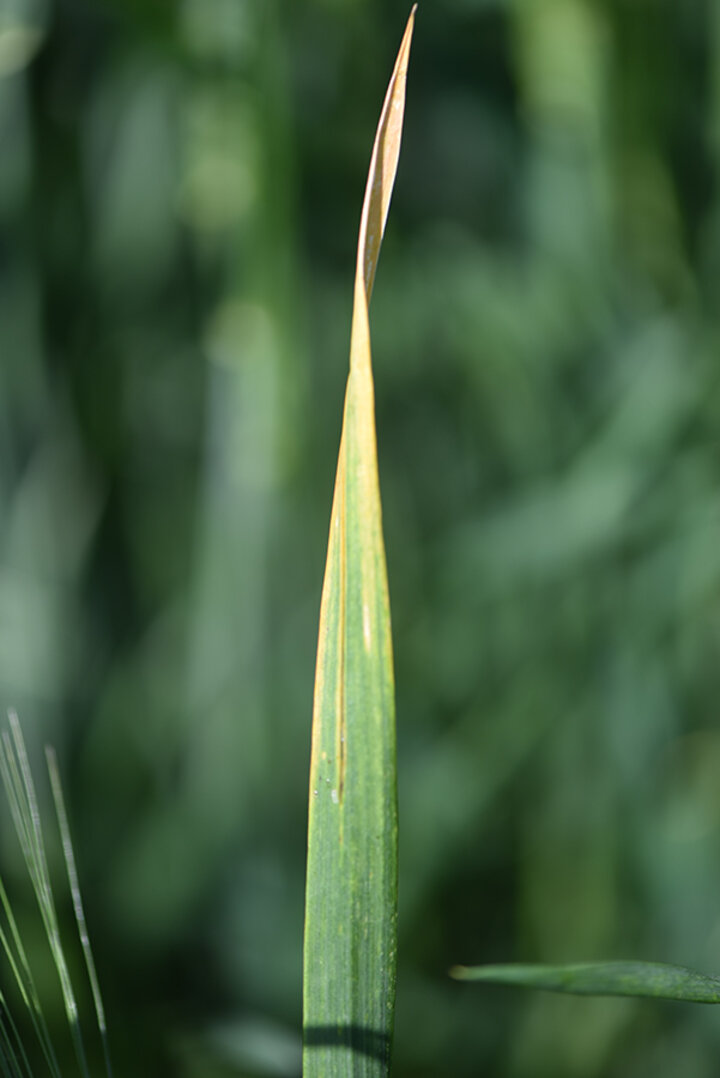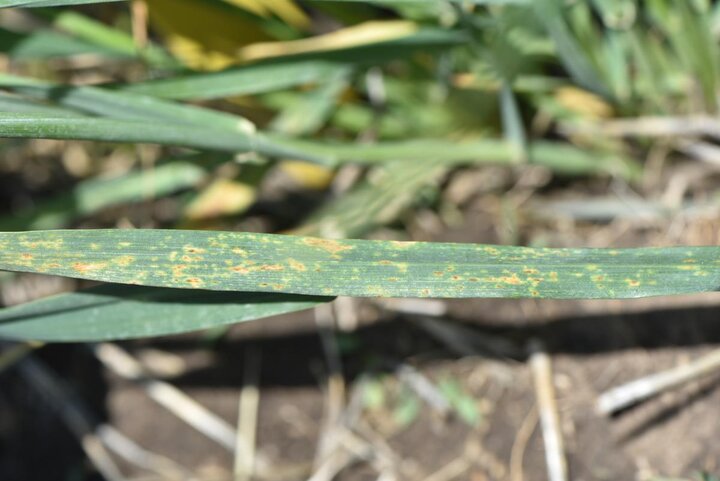A survey of wheat fields in southeast Nebraska on May 23-24 showed the crop in the heading to flowering growth stage (Figure 1). In Saline and Jefferson counties, no diseases were found in growers’ fields, and the wheat appeared to be stressed from lack of moisture (Figure 2). Trace levels of white heads (Figure 3), caused either by freezing temperatures earlier in the growing season or damage from wheat stem maggots, were observed in one field.
At the university’s Havelock Research Farm near Lincoln in Lancaster County and at the Eastern Nebraska Research and Extension Center (ENREC) near Mead in Saunders County, trace levels of barley yellow dwarf (Figure 4) and a fungal leaf spot disease in its initial stages of development (Figure 5) were observed in research plots.

(Right) Figure 3. A white head in a grower’s wheat field in Saline County on May 23.



Management
Currently, diseases are generally absent or at very low levels in Nebraska wheat fields, mainly because of dry conditions that prevailed before the recent sporadic rains, which have not been sufficient to alleviate moisture stress in the wheat crop in some parts of the state. To date stripe rust and leaf rust have not been observed in Nebraska. Forecasted temperatures in the upper 80s to upper 90s with little rain expected in the coming days will slow down or prevent disease development, especially in areas that are already dry.
In those areas where wheat is already headed or flowering, a fungicide application is not necessary if diseases are absent or at very low levels. Continue scouting for foliar diseases, especially in areas that receive rainfall and where the wheat crop has not yet headed. If a decision is made to apply a fungicide to wheat that is headed or flowering, care should be taken to observe the pre-harvest interval stated on the label. Virus diseases such as barley yellow dwarf cannot be controlled once they occur.

